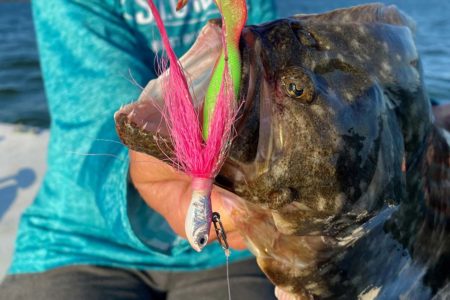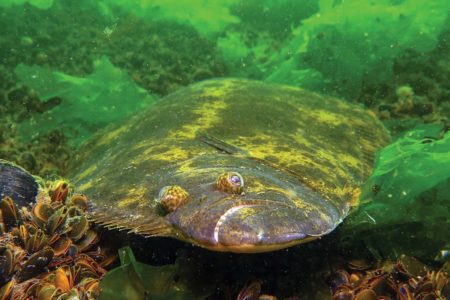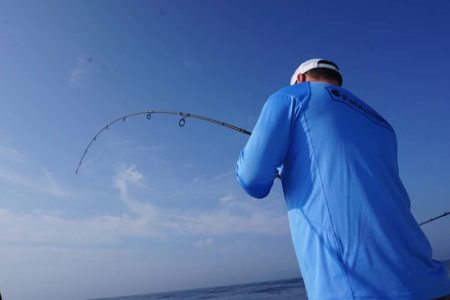Battling fluke in 4 feet of water on light tackle never gets old, and now is the time.
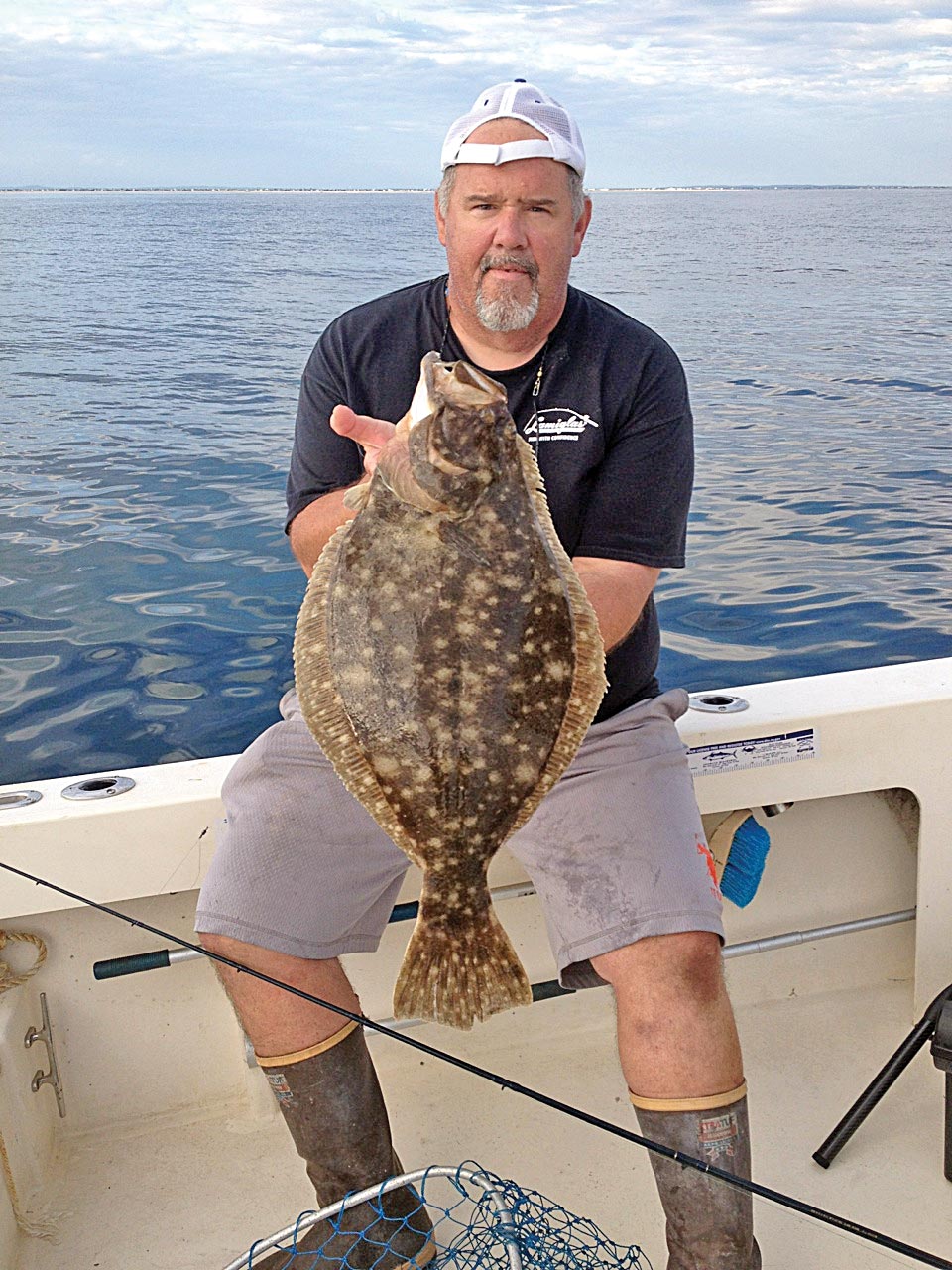
From Jamaica Bay to Shinnecock Bay, the South Shore’s bays are primarily made up of shallow flats. However for the most part, there are areas of deep-water pockets and channels where an incoming tide carries clean, cool ocean waters filled with nutrients. On the reverse, the ebb tide does a great job of filtering the bays of spat and weeds, helping to cleanse these waters. All of these bodies of water contain areas of mud and sand flats, and both can prove extremely productive depending on what the fluke are munching on. Savvy anglers are aware of the potential that these patches of bottom offer during fluke season. Do not think for a minute when you see your neighbor at the dock holding up that 10-pound doormat that it was sheer luck. There are times lady luck may play a role in it, but for the most part, those anglers that consistently bring home the trophies have done their homework with grade A results.
Flats are home to a smorgasbord of food for the insatiable fluke. Worms of many kinds, clams, blue mussels, and especially juvenile crabs are just a few of the morsels that attract fluke to these feeding zones. In addition, spearing, sand eels, killies and peanut bunker are regular inhabitants of the flats ecosystem. While fluke will gladly accept any number of these appetizers, nothing satisfies their bellies as much as baby crabs. Open the stomach of a fluke caught in the shallows and more times than not you will find it bulging with dime to quarter size crabs.
Study a Chart
Local navigation charts will steer you in the right direction to “read” the water and help locate the muddy and sandy areas as well as channel edges, depressions and any other structure relevant to locating potential hotspots. There’s a lot of ground out there and examining a chart will give you a good starting point for locating these areas. A good navigational chart will reveal areas of soft and hard bottom, bottom contours and areas where rips are likely to develop. It is always beneficial to study a chart before heading out to any unfamiliar area, and marking locations that offer potential. In addition to searching out flats, look for deep-water drop-offs that empty and fill into a channel. Shallow edges and drop-offs separating a channel from a flat are prime locations for finding fluke, especially in areas that include a rip. Don’t overlook little drains that cut through the flats as they can also be very productive.
Go Light and Small
The right choice in tackle is simple – keep it light. Fluke can be line shy, especially in the early going, and in clear, shallow water. Spinning or baitcasting outfits spooled with 10- or 12-pound braid are more than enough in these shallow waters. If you are going to do any bucktailing, the braid is a must. Add a 6-foot length of 20- or 30-pound fluorocarbon leader directly to the main line via an Albright Knot. Fluorocarbon is pretty much transparent under water and harder to detect in the shallows.
Simply put, small natural or artificial baits are the way to go early on. Sand shrimp and spearing are prime forage in the early going so bouncing a 2- or 3-ounce jig in front of them just isn’t going to cut it in May. You’ll want to go as light as possible if you’re going to jig bucktails and leadheads with soft plastics, preferably between 1/16 and 3/8 of an ounce. I would suggest not exceeding 1 ounce when fishing in water less than 10 feet as both bucktails and leadhead jigs larger than that are less appealing to fluke in the shallow bays. The most popular bucktail jig in recent years for fluke has been the Prime Bucktail made by Spro. White, pink, glow, chartreuse, spearing blue and sand eel green each have their fans, however I’ve found white, glow and spearing blue in 1/4 and 3/8 sizes to be deadly this time of year.
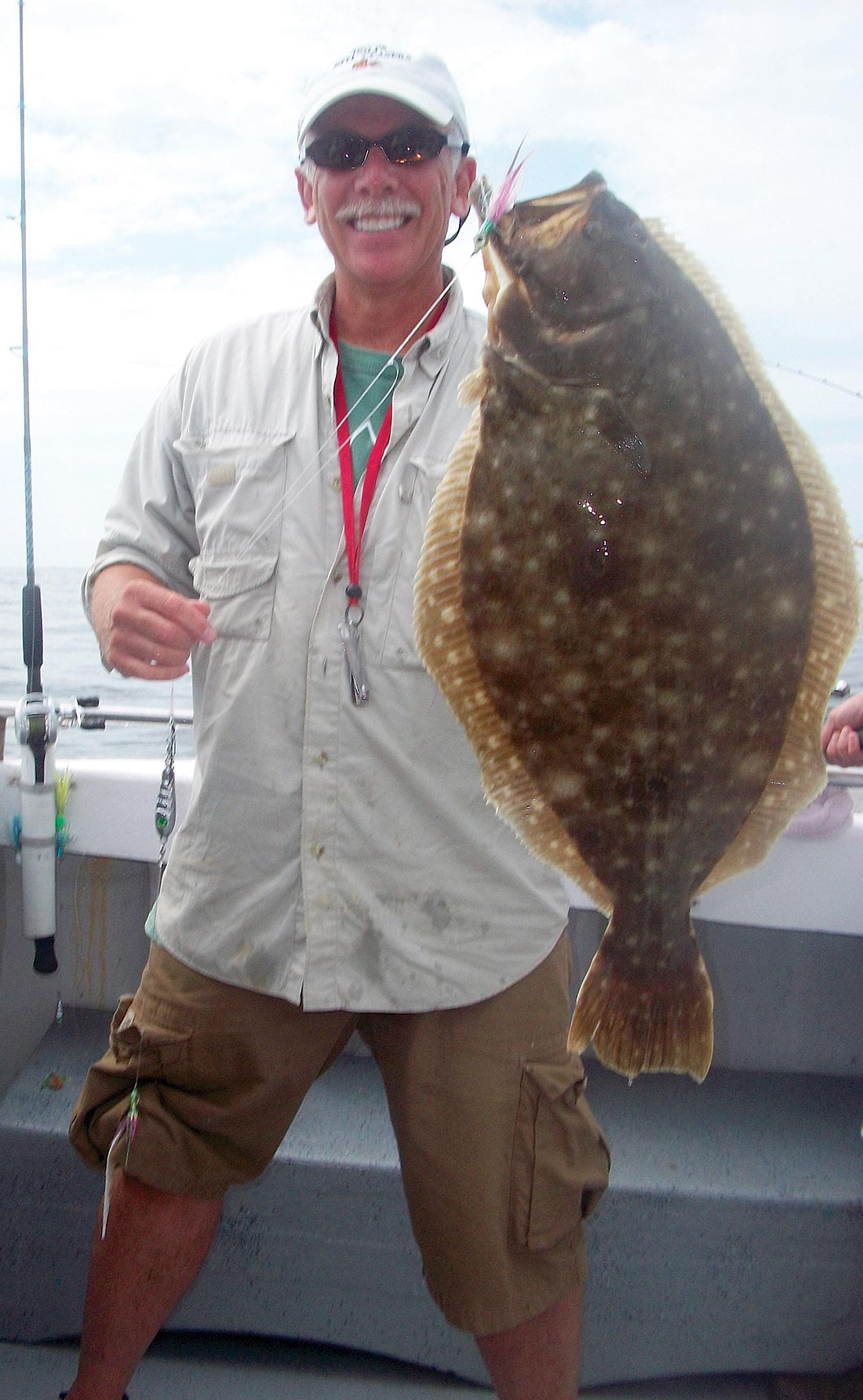
You may want to sweeten up these jigs with either a small, thin strip of squid or a small spearing. The 3-inch Berkley Gulp Alive Swimming Mullet in white is a good alternative to natural bait. As for soft body plastics, some of the more effective choices for fluke that will also appeal to spring run weakfish and stripers are the 4-inch Fin-S-Fish, in white and Arkansas silver, 4-inch Bass Assassins in white, and albino shad with red tail, Tsunami 2-inch swim shads and Berkley Gulp 6-inch silver mud Sand Eels. All these baits should be fished naked on plain leadheads in the 1/4 to 3/4 ounce size range. Always try employ just enough weight to lightly bounce the bottom. Doing so will create a more natural appearance when bounced slowly along the bottom.
Teasers tied 18 inches above the bucktail via a dropper loop will at times keep pace if not outfish your primary offerings of bucktails and soft plastics. In the shallows and in deeper waters, Tom’s Teasers are king of the hill and outright killers throughout the fluke season. Captains John Capuano and Deena Lipmann of the Shinnecock based open boat Shinnecock Star witness on a daily basis how well these teasers work their magic as the day’s pool fish is often decided by a fish caught on a Tom’s Teaser. They are custom made by hand and can only be purchased from Captains John or Deena aboard the Star. If you are interested in putting a few of these beauties in your bag, give Captain John a call at 631-728-4563 or see Deena at the boat where you can purchase them.
The proper technique to fishing jigs is to imitate a distressed baitfish by bouncing the jig with short hops constantly along the bottom. However, early in the season when the water is still on the cool side, you may want to slow the bouncing a notch or two. Fluke are not as aggressive as they are later in the season, so allow a second or two when you feel those light taps or bumps before setting the hook. More often than not, the big fish are the light hitters while the smaller short fluke will hit the bait with a vengeance.
The Tide Factor
Tides have a major affect on water temperature and the presence of certain baits. If you find water temperature below 75 degrees and a whole lot of food, you are sure to find fluke. Generally, the last couple of hours of a flood tide to the first couple of hours of the ebb offer the most consistent, predictable fishing along the flats. As a tide turns and ebbs, it will pull with it an abundance of baitfish that swim the shallows during high tide. The period of a new and full moon is an ideal time to fish the flats. During these lunar phases, the water levels during high tide run above normal and the speed of the currents increases. What this means is forage that usually inhabit the channel during an incoming tide, will look to escape the strong currents by entering the calmer flats to escape predators. Little do they realize that once the tide begins to ebb, they will be forced off the shallows and back into the channel where hungry fluke wait along the channel edges.
Unless you have a few screws loose like me, almost no one likes to fish in inclement weather. However, the fact is that most of my biggest fluke have been caught in the snotty stuff. Okay I admit that in my book, nothing is more tranquil than standing on deck with the patter of rain against the hood of my Grudens, and a whipping east wind whistling past my ears. Maybe it’s because I need my head examined, or perhaps I know that being in the sheltered confines of the bay, I know I can expect some stellar action. While fair weather will provide plenty of action, experience has taught me that getting wet sometimes has its rewards in the form of an outsize fluke. Now don’t get me wrong, this is not always the case, but it is the closest to a pot of gems I can get to. Oh sure, I’ve taken many big fluke on those picture-perfect days and you will too, but the fact is fluke become extremely aggressive when the barometer falls. This equates to winds out of the east or northeast and rain. So the next time Mr. Weatherman calls for some snot, grab your slickers and head for the bays.
And while the chance of filling your four fish limit is greater than it has been in quite some time, a great day of fishing does not have to equate to a cooler full of fish. At 19 inches or more, a couple of fluke can provide a healthy amount of fillets. Take only what you need and save some for tomorrow.
